Young Czech Scientist Makes First-Ever Documentation of the Largest Rodent of Australia and Oceania – The Mysterious Giant Woolly Rat Measures 85 cm and Weighs Nearly 2 kg
A six-month expedition to the tropical island of New Guinea has led to a remarkable discovery by a young Czech doctoral candidate from the Biology Centre of the Czech Academy of Sciences and the University of South Bohemia. František Vejmělka has become the first person to scientifically document in the wild Mallomys istapantap, one of the largest murine rodents in the world. This elusive nocturnal species inhabits the cool, misty montane forests and grasslands at elevations of around 3,700 metres. Until now, it was known to science only from a handful of museum specimens. For the first time, photos and video footage have been released showing the animal in its natural habitat.
The Subalpine Woolly Rat, Mallomys istapantap, was not described until 1989, based on historical museum material. It was last recorded 30 years ago and had never before been photographed. The new images and field data collected by the Czech researcher offer an extraordinary contribution to our understanding of this rare species and to the little-known mammalian biodiversity of New Guinea more broadly.
A Mysterious Giant Emerges from the Misty Highlands
“It’s astonishing that such a large and striking animal has remained so poorly studied. How much more is there to discover about the biodiversity of tropical mountains?” says Vejmělka. In addition to the first-ever photos and video, he also recorded the first biometric measurements of males and gathered data on the animal’s diet, parasites, activity patterns, movement, and other aspects of its lifestyle.
New Guinean woolly rats, together with the giant cloud rats of the Philippines, are the largest murine rodents in the world. They are found only in the steep highlands of New Guinea covered in pristine rainforest. In the absence of other competing placental mammals, they have diversified over five million years into a remarkable variety of forms and species.
The shaggy-furred Mallomys istapantap leads a hidden life in remote, hard-to-reach areas. It climbs trees at night, hides in underground burrows or tree canopies during the day, and feeds exclusively on plant matter. With sharp incisors, thick fur, 8 cm-long paws, a total body length (including tail) of 85 cm, and a weight up to 2 kg, it is a striking and formidable creature. However, due to its nocturnal habits and the inaccessibility of its habitat, it has been extremely difficult to observe in the wild.
Local Knowledge and Global Science Come Together
“If it weren’t for the indigenous hunters who accompanied me in the mountains and helped me locate the animals, I would never have been able to collect this data,” says Vejmělka. During his six-month expedition, he worked closely with several local tribes while surveying the mammalian diversity of Mount Wilhelm (4,509 m), the highest peak in Papua New Guinea, from base to summit. He documented and genetically identified 61 species of non-flying mammals (rodents and marsupials) found along the mountain.
This research contributes to a deeper understanding of the extraordinary biodiversity of New Guinea’s underexplored tropical mountains. While tropical regions in the Americas, Africa, and Southeast Asia have been well studied in this regard, the Australasian realm has remained largely uncharted. Equally crucial is the collaboration with local communities.
Through such scientific work, the indigenous inhabitants also learn about the unique natural heritage of their homeland and the need to protect it, for instance from the growing threat of mining.
The discovery has been published in the scientific journal Mammalia:
Vejmělka, F. (2025). First scientific observation of the largest Sahulian rodent, Mallomys istapantap, in the wild. Mammalia. https://doi.org/10.1515/mammalia-2024-0153
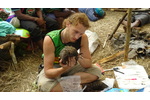
Výzkum ježury australské...
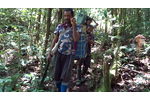
Nebezpečný sestup z hory

Mladý výzkumník František Vejmělka

Místo záznamu velekrysy Mallomys...
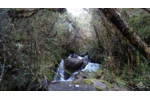
Biotop výskytu velekrysy...

Sběr trofejí a vzorků pro...

Sestup s nosiči

Přejíždění nížinné řeky
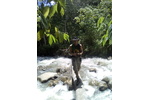
Návrat ježury na místo nálezu
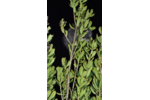
Fotografie velekrysy Mallomys...
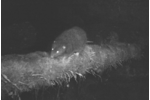
Velekrysa Mallomys istapantap....

Rituál poděkování výzkumníkovi...
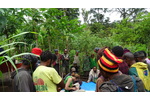
Zájem domorodců
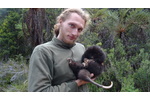
Kuskus černý

Domorodí lovci
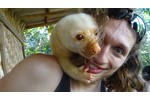
Stromový vačnatec kuskus...
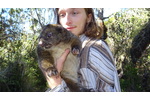
Býložravý stromový vačnatec...

Výzkumný asistent s rodinou...

Býložravý stromový vačnatec...
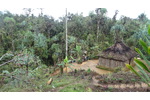
Vesnická chatrč v horách (2200 m...

Papuánská silnice
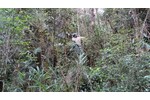
Instalace fotopasti

Mlžný deštný prales 3500 m n.m.

Obřad ve vesnici Hogave














